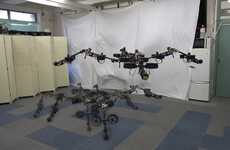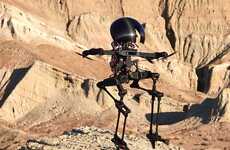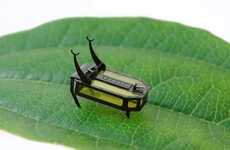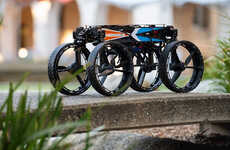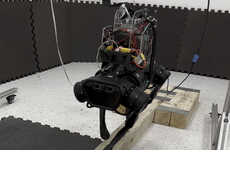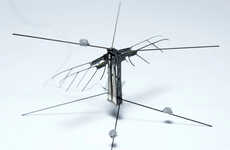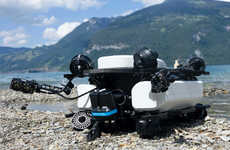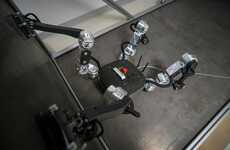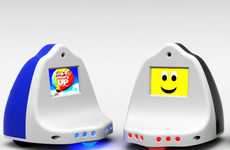
A New Harvard Robotic Cockroach Can Walk on and Under Water
Justin Lam — July 6, 2018 — Tech
References: popularmechanics & engadget
A newly created Harvard robotic cockroach shows that the university is developing quite a knack for robotics and may lead the charge in creating tiny amphibious robots. Designed as an upgraded version of the Harvard Ambulatory Microbot (HAMR) this new Harvard robotic cockroach possess the distinct ability to swim and walk on water, in addition to walking on land. The robot is incredibly small in size and weighs just 1.65 grams. This size and weight is pivotal to its ability in traversing both under and onto water.
The Harvard robotic cockroach is capable of walking on top of water thanks to surface tension and related buoyancy, while electrowetting helps it break through the surface and walk on the ground at the bottom of the water. Electrowetting is a process in which the contact angle between a material and water surface under a voltage are reduced.
Image Credit: Harvard
The Harvard robotic cockroach is capable of walking on top of water thanks to surface tension and related buoyancy, while electrowetting helps it break through the surface and walk on the ground at the bottom of the water. Electrowetting is a process in which the contact angle between a material and water surface under a voltage are reduced.
Image Credit: Harvard
Trend Themes
1. Amphibious Robotics - The development of tiny amphibious robots, like the Harvard robotic cockroach, opens up opportunities for robotic exploration and surveillance in aquatic environments.
2. Microbotics - The success of the Harvard Ambulatory Microbot (HAMR) and the new Harvard robotic cockroach highlights the potential for further advancements in microbotic technology, enabling applications in various industries.
3. Electrowetting Technology - The application of electrowetting in robotics, as demonstrated by the Harvard robotic cockroach, presents disruptive innovation opportunities not only in aquatic locomotion but also in other fields requiring liquid-based interactions.
Industry Implications
1. Robotics - The development of small, amphibious robots opens up new possibilities for industries such as underwater exploration, rescue operations, and surveillance.
2. Biotechnology - Microbotics technology, exemplified by the Harvard robotic cockroach, has the potential to revolutionize industries such as medical diagnostics, targeted drug delivery, and microsurgery.
3. Material Science - The application of electrowetting technology showcased by the Harvard robotic cockroach offers disruptive opportunities for industries involved in liquid-based material interactions, such as coatings, lubrication, and advanced manufacturing.
3.1
Score
Popularity
Activity
Freshness

